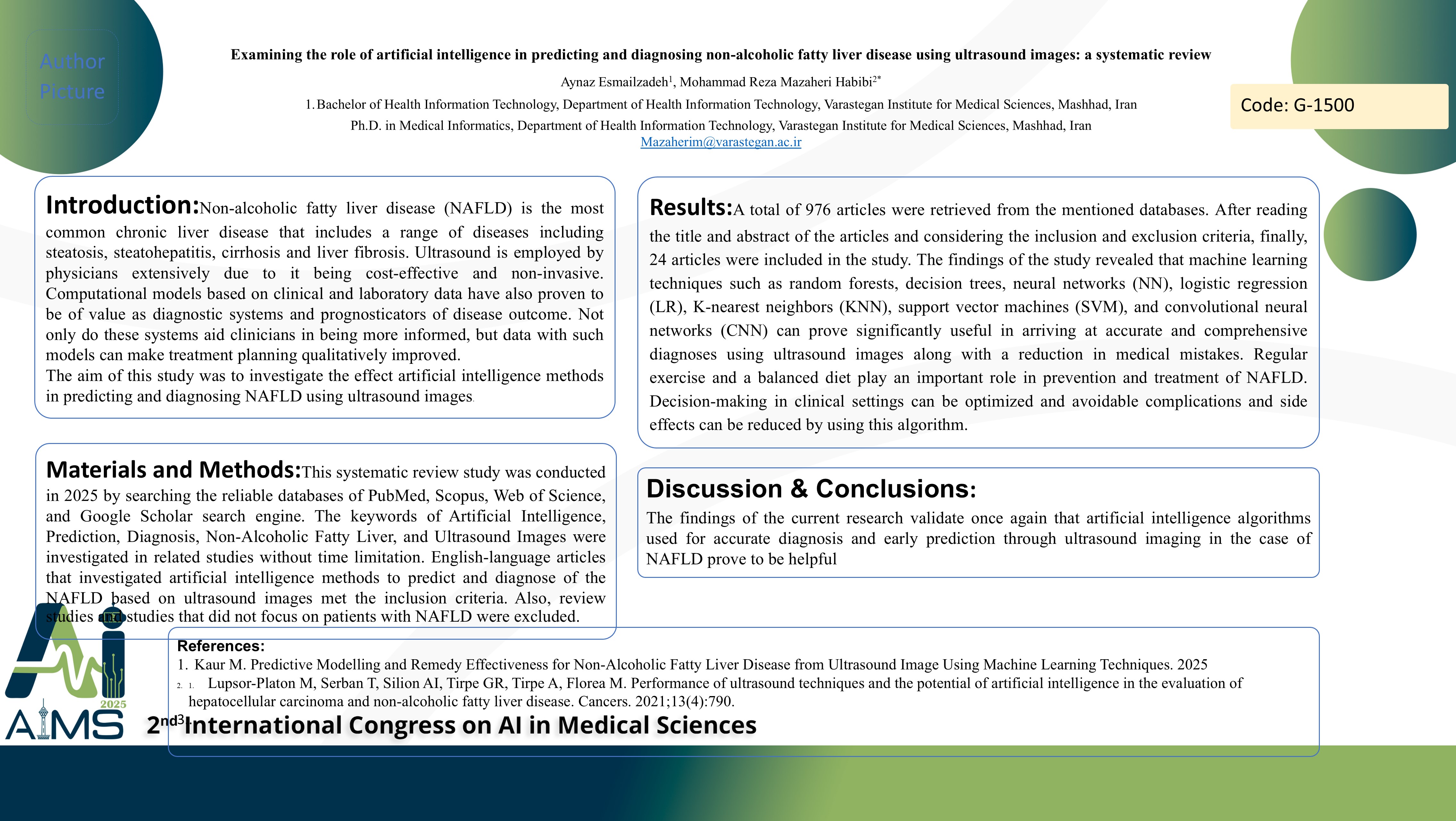Examining the role of artificial intelligence in predicting and diagnosing non-alcoholic fatty liver disease using ultrasound images: a systematic review
Code: G-1500
Authors: Aynaz Esmailzadeh ℗, Mohammad Reza Mazaheri Habibi *
Schedule: Not Scheduled!
Tag: Clinical Decision Support System
Download: Download Poster
Abstract:
Abstract
Introduction: Non-alcoholic fatty liver disease (NAFLD) is the most common chronic liver disease that includes a range of diseases including steatosis, steatohepatitis, cirrhosis and liver fibrosis. Ultrasound is employed by physicians extensively due to it being cost-effective and non-invasive. Computational models based on clinical and laboratory data have also proven to be of value as diagnostic systems and prognosticators of disease outcome. Not only do these systems aid clinicians in being more informed, but data with such models can make treatment planning qualitatively improved. Objective: The aim of this study was to investigate the effect AI methods in predicting and diagnosing NAFLD using ultrasound images. Methods: This systematic review study was conducted in 2025 by searching the reliable databases of PubMed, Scopus, Web of Science, and Google Scholar search engine. The keywords of Artificial Intelligence, Prediction, Diagnosis, Non-Alcoholic Fatty Liver, and Ultrasound Images were investigated in related studies without time limitation. English-language articles that investigated AI methods to predict and diagnose of the NAFLD based on ultrasound images met the inclusion criteria. Also, review studies and studies that did not focus on patients with NAFLD were excluded. Results: A total of 976 articles were retrieved from the mentioned databases. After reading the title and abstract of the articles and considering the inclusion and exclusion criteria, finally, 24 articles were included in the study. The findings of the study revealed that machine learning techniques such as random forests, decision trees, neural networks (NN), logistic regression (LR), K-nearest neighbors (KNN), support vector machines (SVM), and convolutional neural networks (CNN) can prove significantly useful in arriving at accurate and comprehensive diagnoses using ultrasound images along with a reduction in medical mistakes. Regular exercise and a balanced diet play an important role in prevention and treatment of NAFLD. Decision-making in clinical settings can be optimized and avoidable complications and side effects can be reduced by using this algorithm. Conclusion: The findings of the current research validate once again that AI algorithms used for accurate diagnosis and early prediction through ultrasound imaging in the case of NAFLD prove to be helpful.
Keywords
NAFLD, UltrasoundImages, Artificial Intelligence
